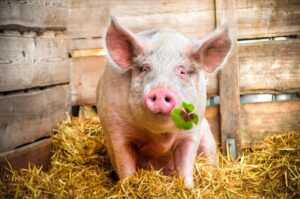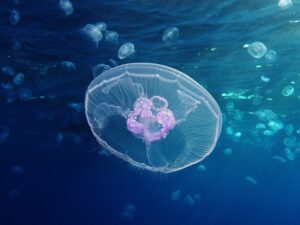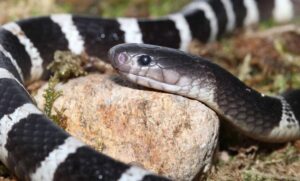Smelling with their tongues, having teeth but not chewing, and the ability to fly are among the Interesting Facts About Snakes. If you also want to learn about the mysterious and fascinating characteristics of snakes, join KnowAllAnimals to explore the details in the following article!
1. Interesting Facts About Snakes and Their Mysterious World
Approximately 3,000 Snake species exist on the planet, of which about 450 are venomous. Of those, 250 species have venom potent enough to kill a human.
The largest snake is the anaconda, which can be up to 12.3m (40 feet) long, while the smallest is the Brahminy blind snake, which is only 0.9cm (0.35 inches) long.
Snakes have two lungs, a rod-like liver, and long kidneys and intestines. A quarter of all snake species have a small anus with scales covering it, and their tail is a segment of bone.
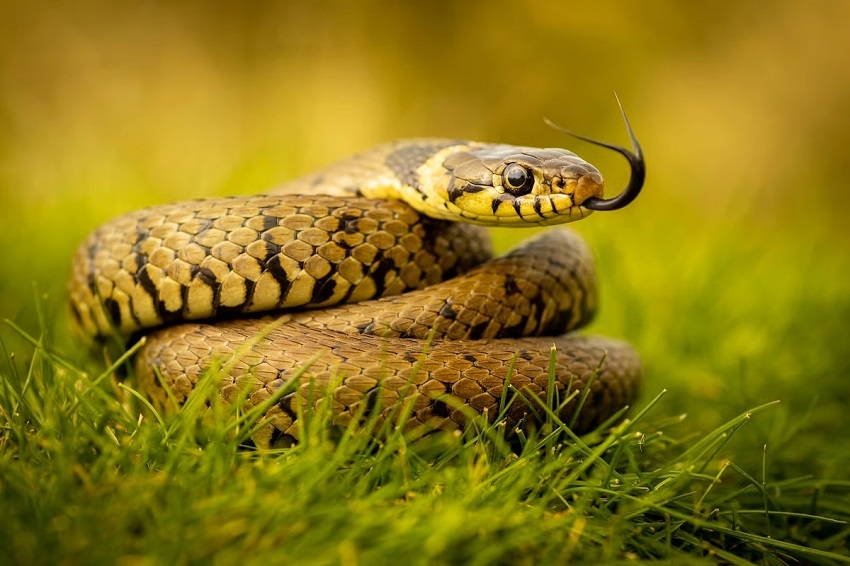
Their sense of smell is a snake’s most acute sense. They smell with their tongues. Thanks to its forked tongue, a snake can determine the direction of a scent. Although they cannot hear, snakes can feel sound vibrations. A snake’s eyesight is very poor.
Viper and python species have heat-sensing pits on their heads, which help them detect temperature changes as small as 0.002°C, giving them the ability to hunt without sight, even in the dark. All snake species are good swimmers. Although sea snakes have no gills, they rarely surface. They use the dissolved oxygen in the water to breathe.
Most snakes have teeth, with two rows in the upper jaw and two in the lower. But snakes don’t chew because their teeth are curved inward. These teeth bite and hold prey very tightly. Only venomous snake species have fangs.
A snake’s lower jaw is very flexible. The jaws of most snake species are connected directly to the skull, which allows them to open their mouths wider to swallow prey that is larger than their body’s diameter. A snake can swallow prey up to four times the width of its head.
Snakes usually breed once a year. Many species reproduce by laying eggs. A few species keep their fertilized eggs in their bodies until they hatch and then give birth. Snakes typically choose a warm place to lay their eggs. The hatchlings use an egg tooth to break out of their shells. The parents leave the young snakes to fend for themselves. The king cobra is the only one that builds a nest and cares for its eggs.
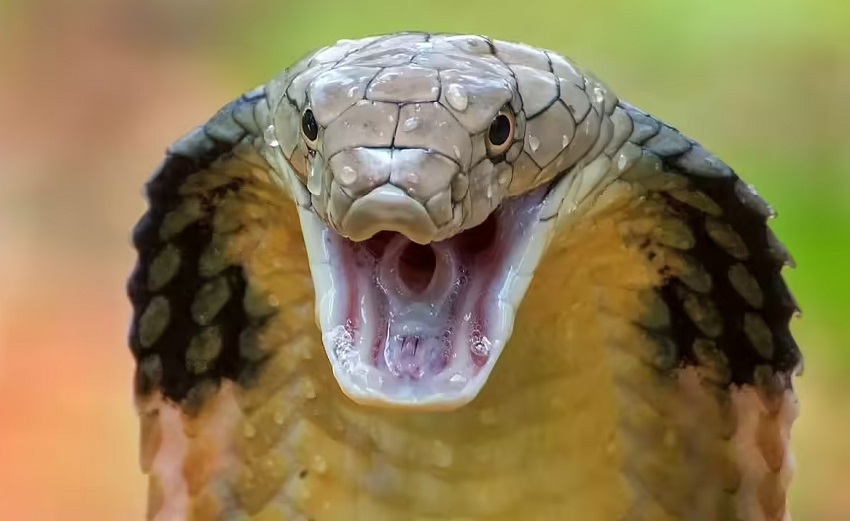
A female sea snake only needs to mate once and can store enough sperm to use for the next 10 years.
A snake’s heart can slide 1 to 1.5 times out of its normal position to allow prey to pass into its stomach because it is surrounded by a sac.
Snakes move by contracting and expanding the muscles along their bodies. They do not move quickly, only about 12 km/h (7.5 mph), so they cannot outrun a person.
Some snake species have the ability to launch or “fly” up to 13m (42.6 ft) in the air. During the launch/flight, the snake’s body contorts into an S-shape. Most flying snakes belong to the genus Chrysopelea.
Snakes have no eyelids. Instead, a transparent scale protects their eyes. Snakes sleep with their eyes open and their bodies coiled up. After a big meal, a snake can sleep for an entire day, or even a week. During the winter, snakes can hibernate for months.
A snake’s venom is made up of various enzymes and proteins. It can be a neurotoxin or a hemotoxin. When it enters an animal’s body, the venom spreads quickly and destroys the nervous or circulatory system. A king cobra’s bite can kill an elephant.
Most snakes inject venom when they bite. However, some species, like the spitting cobra, can spray venom up to 1.5 to more than 2m (5 to 6.5 ft) away.
Venomous snakes store venom in glands located near their eyes. The venom that snakes spray is harmless to skin, but it can be dangerous if it gets in your eyes or an open wound.
Up to 100,000 people die from snakebites every year.
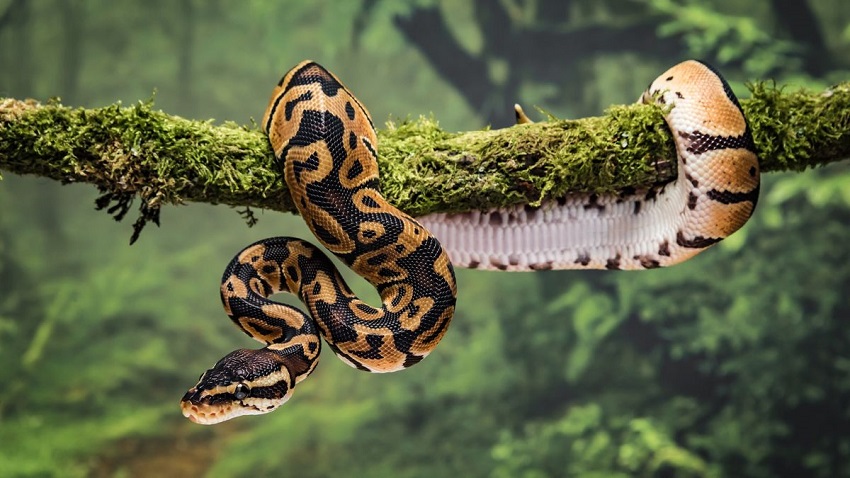
Snakes are found all over the world. Surviving snake species are found on nearly every continent (except Antarctica), in the Indian and Pacific Oceans, and on most smaller landmasses. Notable exceptions include some large islands like Ireland and New Zealand, and many small islands in the Atlantic and Central Pacific.
Their internal organ arrangement is peculiar. To fit their long, narrow bodies, a snake’s paired organs, such as the kidneys, are arranged with one in front of the other instead of side-by-side. Most snake species have only one functional lung. A few species still have a pelvic girdle with a pair of vestigial claws on either side of the vent.
2. FAQs
1. How do snakes “smell” if they don’t have a nose?
Snakes use their tongue to collect scent molecules from the air. When the tongue is retracted into the mouth, these molecules are transferred to the Jacobson’s organ to be analyzed, allowing the snake to identify the direction of the scent source.
2. How many snake species are there on Earth, and how many are venomous?
There are approximately 3,000 snake species, of which about 450 are venomous, and about 250 of those have venom potent enough to be fatal to humans.
3. What are flying snakes, and how do they “fly”?
Flying snakes (genus Chrysopelea) have the ability to “fly” or glide through the air. They flatten their bodies, form an S-shape, and launch themselves from tree to tree, sometimes gliding more than 13 meters.
4. How large of a prey can a snake swallow?
Snakes have a very flexible lower jaw that connects directly to the skull, allowing them to swallow prey with a diameter up to about four times the width of their head.
5. Can snakes be dangerous to human eyes?
Yes. Some snake species can spray or spit venom into an opponent’s eyes when threatened. Also, if venom comes into contact with the eyes or an open wound, it can cause serious damage.
3. Conclusion
Snakes are truly unique creatures with many special abilities that few other animals possess—from “smelling” with their tongues and flying through the trees to swallowing huge prey. These facts not only increase our amazement but also help us better understand nature’s capacity for adaptation. We hope this article on Interesting Facts About Snakes has helped you discover new knowledge about them and appreciate the biodiversity around us.

